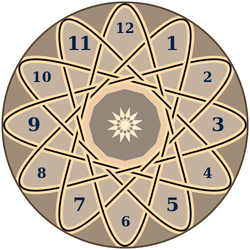AP or No AP? Part (ii)
 From the set {
},
numbers are removed. Find the smallest
such that no matter which
numbers are removed, there always exists at least one Arithmetic Progression of length
.
From the set {
},
numbers are removed. Find the smallest
such that no matter which
numbers are removed, there always exists at least one Arithmetic Progression of length
.
The answer is 124.
This section requires Javascript.
You are seeing this because something didn't load right. We suggest you, (a) try
refreshing the page, (b) enabling javascript if it is disabled on your browser and,
finally, (c)
loading the
non-javascript version of this page
. We're sorry about the hassle.
The solution to this problem becomes a bit cumbersome but I will try to explain it to the best of my abilities. I will only be providing an overview of what actually happens in the proof as the proof in itself is tedious.
Proof of the lower bound: To prove that n ≥ 1 2 4 I just need to remove 11 numbers from { 1 , 2 , … , 1 2 3 } such that no AP of length 12 remains in the set. Let { 1 , 1 3 , 2 4 , 3 5 , … , 1 1 2 } be the 12 numbers removed. Since 11 is prime there can exist no AP of common difference and length 12 less than 11 and it is easy to note that there is no AP of common difference 11 and length 12. There obviously cannot be any AP of common difference 12 or more since there are not enough terms in the set. Thus we have n ≥ 1 2 4 .
Proof of the upper bound: I will only mention the steps involved in the proof without going into the details. Let a i denote the difference between the i t h and ( i + 1 ) t h numbers that are removed from the set { 1 , 2 , … , 1 2 3 }. First we show that a i can be less than 11 or more than 12 at most once. This requires the use of some basic number theory and Pigeon Hole Principle. Once we have achieved this we can characterize the only valid removals and show that each of these will contain an AP of length 12 ending at 124.